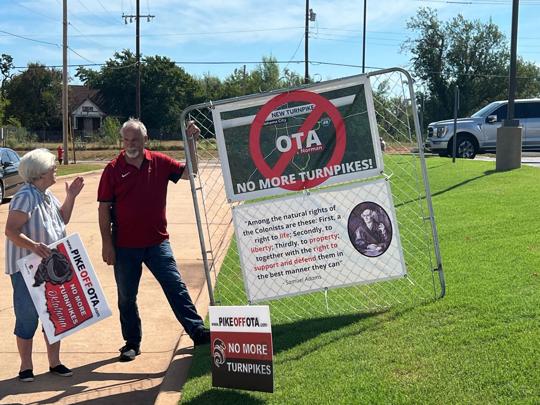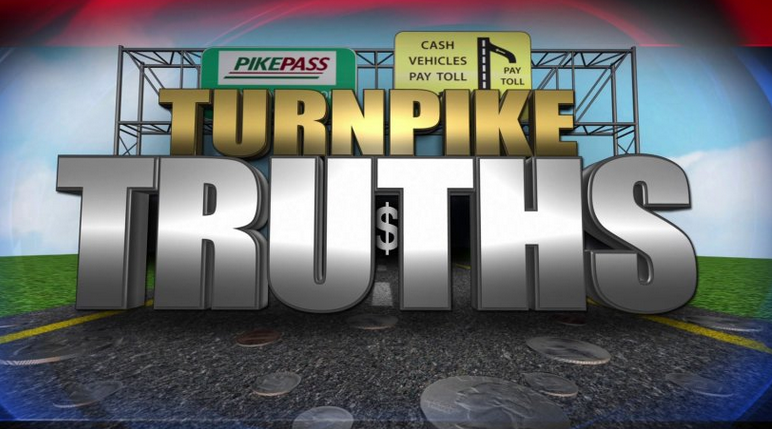
Is Oklahoma on the way to Pennsylvania? Part 2 of the “Oklahoma, you have a turnpike problem” series.
**Originally written and published by Katherine (Tassie) Hirschfeld, Ph.D., in the Oklahoman in May 2022. Updated December 2022 and re-printed here with permission of author.**
This week’s column starts with a pop quiz: How much does it cost to drive from Pittsburgh to Philadelphia on the Pennsylvania Turnpike?
The answer has two parts: 1) more than you think; and b) a lot more than it should. For an out of state passenger car the cost of a three hundred mile round trip between Pennsylvania’s two largest cities is about $158. A pickup truck pulling a trailer will cost around $227, and a class five commercial truck hauling heavy freight could shell out as much as $800.
Pennsylvania residents have complained about the high cost of driving on the state turnpike for years. In 2021 a local merchant described yearly toll increases as “bleeding people dry.” In 2018 a coalition of trucking industry groups and motorists sued, arguing that the crushing expense of tolls was unfairly burdening interstate commerce.
The lawsuit failed, but the complaints were valid. The Pennsylvania Turnpike has the highest toll charges per mile in the United States, and they are headed even higher. Tolls have increased between five and six percent annually since 2006. Increases are projected to continue at a minimum of 3% per year until 2050.
Why is it so expensive to drive across Pennsylvania? There are three interrelated reasons: 1) excessive debt; 2) bad legislation; 3) entrenched corruption. Let’s start with the debt. The Pennsylvania turnpike has one of the highest debt burdens of any turnpike system in the United States. In 2019 the Authority owed approximately $12 billion for its 550 miles of turnpikes and was described by one financial reporter as “on the brink of collapse.” At that time, the Turnpike reported strong revenue—about $1498 per mile. But according to one study only nineteen of those dollars—slightly more than one percent—actually went to support the Turnpike. The rest of the money was siphoned off for debt payments, leaving the Turnpike essentially bankrupt despite solid earnings.
Where did it all of the debt come from? This is where bad legislation and entrenched corruption come in. In 2007 Pennsylvania passed laws requiring the Turnpike Authority to contribute a percentage of its earnings to fund state transportation initiatives. When the Authority couldn’t make the required payments, the gap was filled by borrowing. Banks and bond brokers were eager to help. Fees for municipal bond offerings average around one percent of the total principal of the loan. This does not sound like much until you do the math. One percent of a billion dollar bond deal means ten million dollars in fees for banks and brokerage houses before any interest payments are even collected.
According to a number of historians and journalists, much of the Turnpike’s borrowed money flowed into a vast informal economy of kickbacks, graft and corruption. Political leaders of both parties in Pennsylvania were reported to give high paying managerial jobs at the Turnpike to unqualified friends and family members, some of whom allegedly never showed up for work. In 2014 state prosecutors claimed the Turnpike operated on a “pay to play” scheme, complete with bid rigging and kickbacks for lucrative construction contracts. (For anyone interested in these scandals, I would recommend William Keisling’s 2014 book When the Levee Breaks: The Patronage Crisis at the Pennsylvania Turnpike, The General Assembly and the State Supreme Court.)
Despite the near bankruptcy of the Turnpike Authority and the numerous corruption scandals, Pennsylvania’s turnpike bonds still receive positive “investment grade” ratings. In 2021 an analyst for Fitch explained this assessment came about in part because the Pennsylvania state legislature does not impose limits on toll rate increases. This means that every increase in Turnpike debt can be offset by a parallel increase in toll charges. In other words, the Turnpike authority can shift the costs of its excessive borrowing and corruption onto unsuspecting motorists for years to come.
Now let’s end with another pop quiz: If the Oklahoma Turnpike Authority’s plan to add $5 billion in new debt to its existing $2 billion debt load is approved, how much is it going to cost the average citizen to drive from Oklahoma City to Tulsa or Joplin in ten or fifteen years?
This is the question that all Oklahomans should be asking their elected representatives before any new bond sales are approved. Citizens should also be asking what kind of oversight is in place at the OTA, whether its executives have been good stewards of their existing resources and whether the current organizational structure is adequate to prevent conflicts of interest, self-dealing, graft or corruption. Otherwise, the Access Oklahoma plan could take us all down the road to Pennsylvania.




